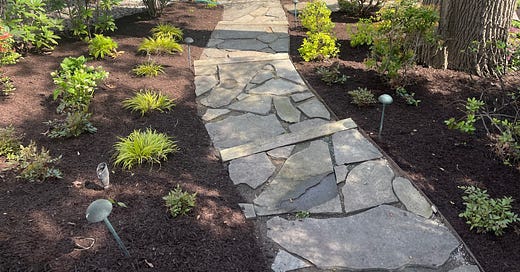Mulch
[Owing to technical difficulties, this didn’t go out last night. Apologies!]
I don’t think enough attention is paid to the excellent aroma of mulch. I’m not sure how to describe it. An earthy, pungent, sharp smell that is pleasant to the senses, as opposed to the smell of dung or manure, which is also earthy and pungent, but requires a little getting used to. The smell of new mulch is like the smell of fresh paint; it heralds the promise of big change in the immediate future. In the case of my garden, when I smell new mulch, I know that the colorless, messy disorder of winter is ending, and I’m about to invite in the long-awaited beginning of spring growth.
The mulch that goes in my garden smells good to me, but that’s not to say that all mulch smells good. It's easy to get confused by the many kinds of mulch, and for all I know, some of them smell awful. A quick Google search lists compost, straw, grass, wood, pine, rubber, woodchips, bark, textile, plastic, pine bark, spent mushroom, cardboard, leaf mold, and many more. I use whatever Lorenzo Garcia, and his crew, the folks who take care of my lawn, can get the best deal on. I know he usually buys it from Home Depot, it typically arrives during the month of May, (this year it arrived a couple of weeks early), it is a dark brown color, it arrives by the truckload, and it is unceremoniously dumped on my driveway near the steps leading down to the back patio. From there, Lorenzo’s army of associates take wheelbarrows full of the stuff around to the back beds, where it is installed in the garden. There is occasionally some thought that I should do the mulching of the garden myself, since it seems like the sort of mindless task that I could do without killing my plants, and because I’m cheap and don’t feel like paying Lorenzo to do it for me. But watching his crew mulch my entire yard in just one day is just too good. Plus, I’ve hauled a few wheelbarrows full of mulch around to the back of the house for one reason or another, and my back tells me that paying Lorenzo to do the spring mulching is a great deal. I’ll handle the ongoing maintenance in the beds during the season, but he is welcome to dress the beds in the spring. The day that Lorenzo and his crew arrive to install my mulch is aptly named mulch day. Clearly one of the most anticipated days of the year.

The transformation of the garden after mulching is magical. Prior to mulching, you’ve been digging, dividing, transplanting, pulling weeds, and doing other necessary spring chores that leave the beds looking untidy, to say the least. But adding the mulch is like giving the beds a fresh coat of paint. Two to three inches of mulch instantly transform the beds into a beautifully organized and tidy garden, where weeds have magically disappeared and the plant colors “pop” against the dark brown color of the mulch. Although there is much work to be done in April, for me, mulch day signals the beginning of the official gardening season. I know I’ve written this before, but April is like baseball’s spring training for the garden, where you do all the work to prepare for a successful season. And mulch day is like Opening Day, a day to be anticipated all winter long, a day when you expect all your hard work to begin to pay off. On mulch day I have the highest hopes for all the new plants in the garden, and for all the older plants, especially those that experienced some kind of calamity the previous year. I’m waiting to see if those banged-up veterans will return to their previous form. And much like baseball, as the season progresses dreams are realized and hopes are dashed on a daily basis. Players and plants may fail to meet our lofty expectations for the season, or alternatively, they may become the superstars of the diamond and the garden.
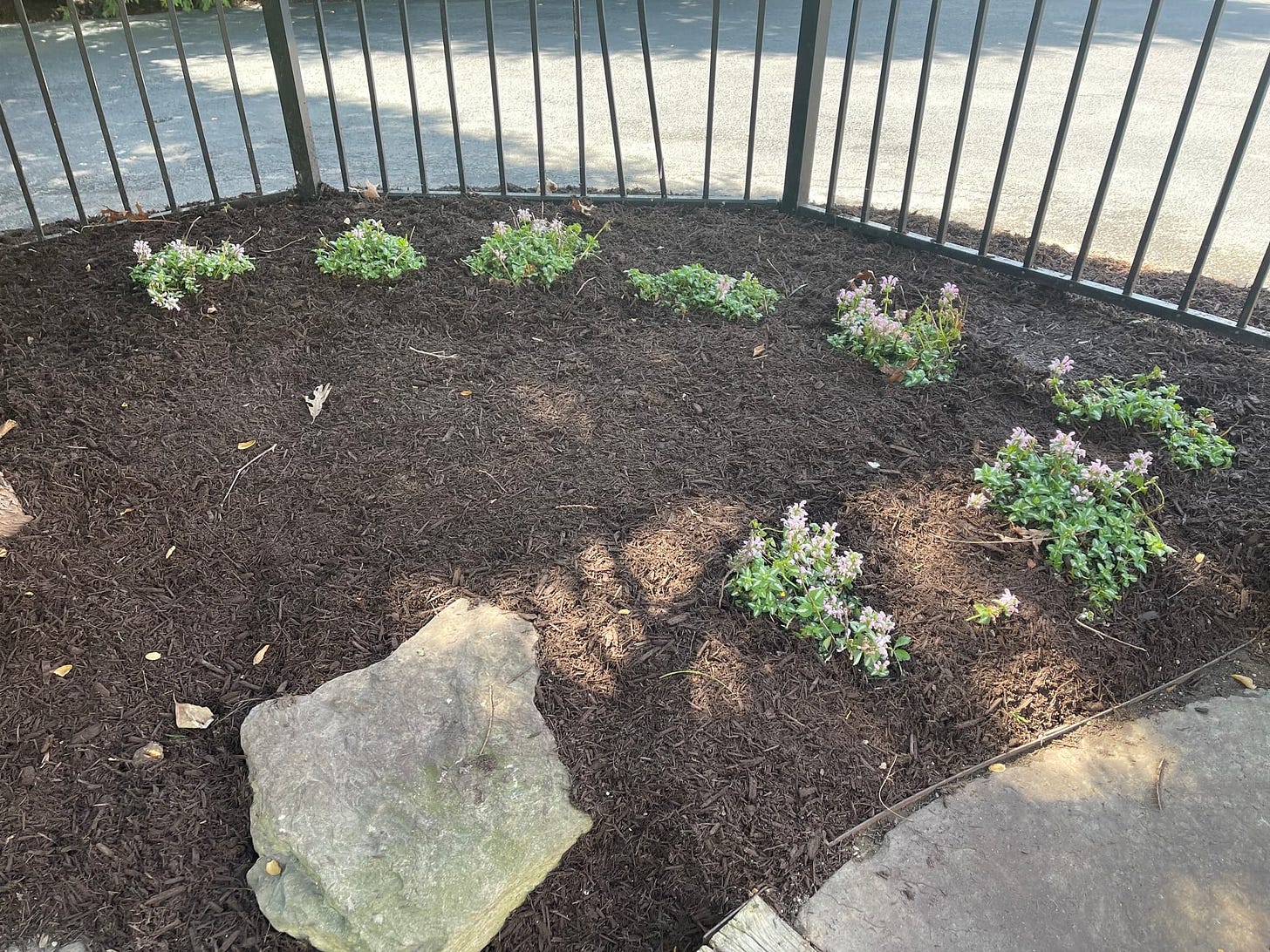
Of course, mulching the beds is not just about adding a dark brown contrast to the color of my plants and enjoying the earthy smell that follows. The mulch does much to keep weeds from growing in the beds and helps to keep plants warm in the winter and cool and damp in the summer. When you deal with clay soil for much of your gardening life, as I have, and you watch water run off of your beds since the clay doesn’t allow it to seep down to the roots of your plants, it is gratifying to watch the mulch help to soak up the water and give your plants a chance to get a drink.
Depending on the type of mulch you are buying, and how much you are buying, you are likely to pay somewhere around $4 for a one-and-a-half to two cubic foot bag of mulch. When you consider the cost of perennial plants, which if you purchase them at a local nursery is likely to be between $10 to $20 for a baby plant that could, if you don’t kill it, give you many years of delight, the cost of mulch is a bargain. If you’re thinking that this doesn’t sound like much of a bargain, you can find lots of information online about how to make your own mulch. The most popular DIY mulch appears to be made from leaves. Simply gather the leaves that have fallen from your trees, spread them out evenly in a layer about two inches thick, and run over them with your lawnmower until the leaves are shredded. If you want a different mulch cocktail, add tree limbs, tree trimmings, tree branches, and tree bark, run them through a wood-chipper, add them to your shredded leaves, and your mulch is now a longer-lasting shredded wood mulch. You can read numerous online articles about making your own mulch if you are interested. Good luck. I tried the DIY approach to making your own leaf mulch last fall (see the post, “What Was I Thinking?”). I can now safely say that I bow to those gardeners who take the time to make mulch and compost themselves. As a Type A Gardener, I’ll let Lorenzo buy it in bulk and let me know what it costs.
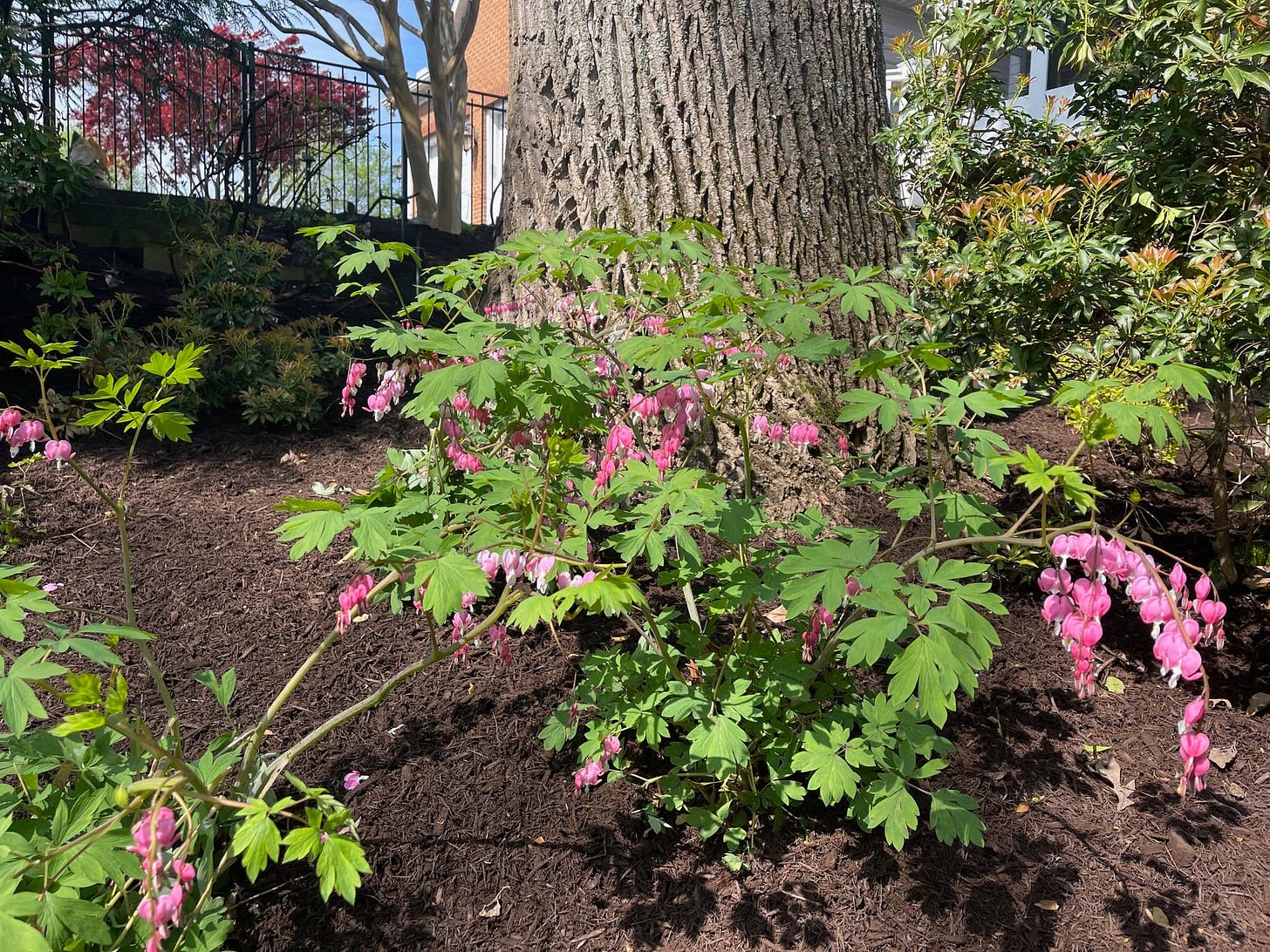
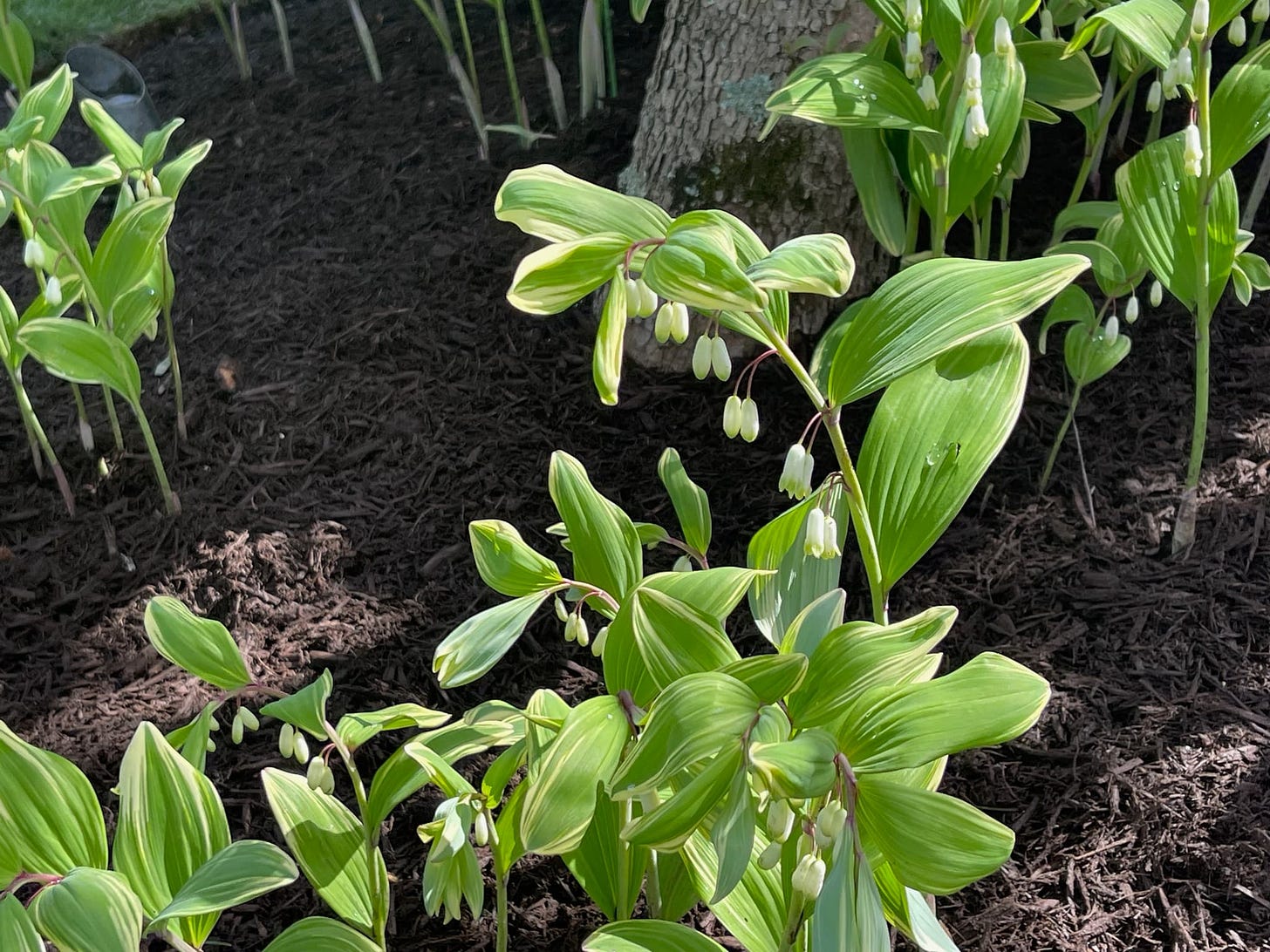
Spring mulch is the “thing” here in the neighborhood. As you drive past people’s homes in April and May it’s quite common to see mountains of mulch stacked in driveways as everyone is doing the same task at about the same time of year. By everyone, I mean the landscaping companies that do the work around here, which is, I’m sure, ground zero for folks who want to pay someone else to do work like mulching or mowing. If I owned a landscape company, Howard County, MD, would be Mecca. You have to be careful driving around the neighborhood because of the plethora of landscaping trucks on both sides of the street. The sound of leaf blowers is constant as crews blow freshly cut grass from driveways and sidewalks during the summer and leaves from the lawns in the fall. If you are out for a walk during the day you can forget about using your wireless earbuds to listen to music. Those leaf blowers are LOUD. I might note that several homes have engaged in the contest of seeing how high they can pyramid mulch at the base of their trees. It’s very impressive looking, but apparently not very good for the health of the trees.
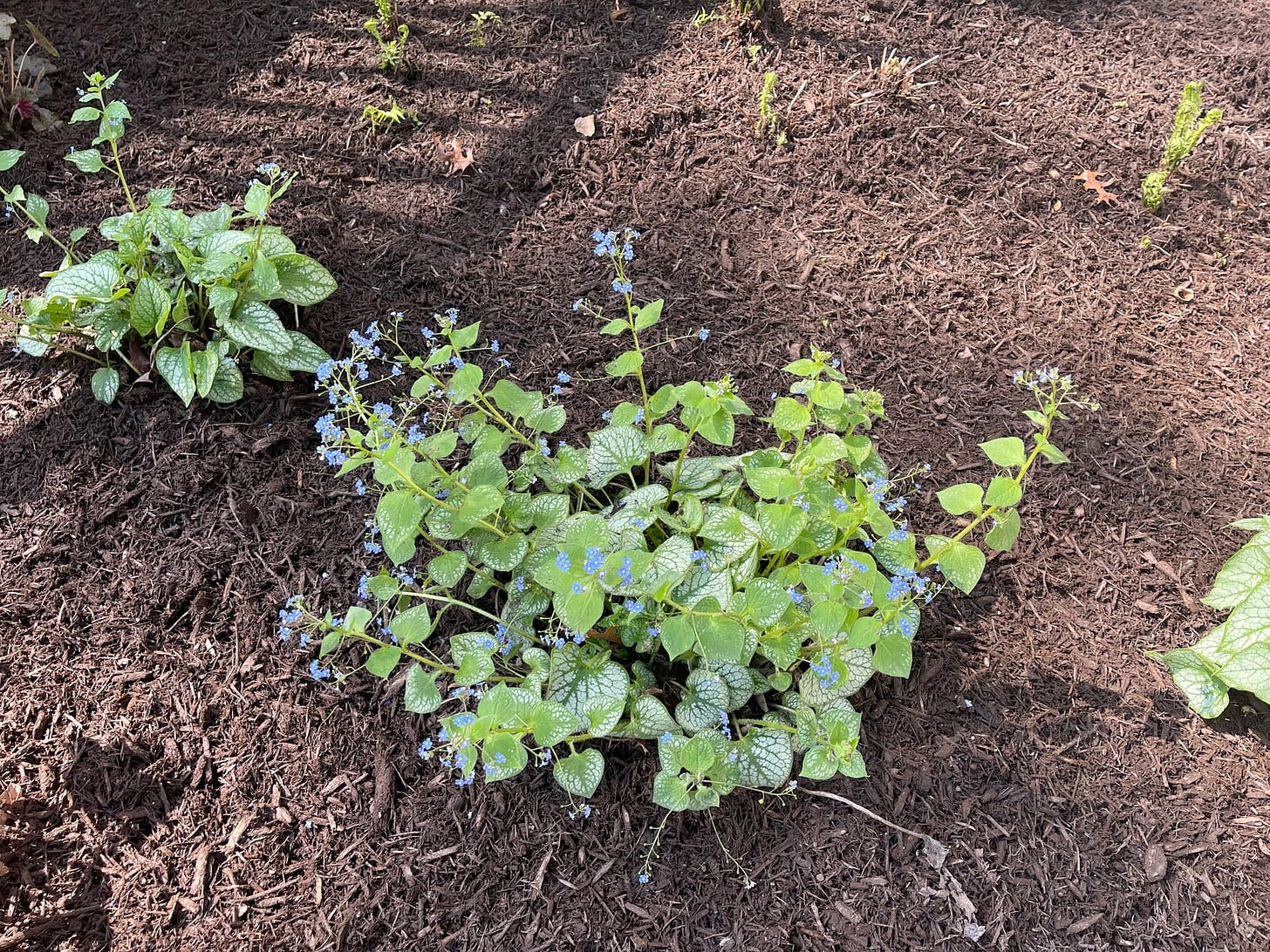
One last note about mulch. I’ve watched several professionals apply mulch to garden beds and they all seem to use a similar technique. In many cases they dig both hands into a wheelbarrow full of mulch, and then literally toss it to where it’s needed in the bed. After watching this technique, I think most of us could do it if we had a mind to. I have tried this technique myself, and it’s a lot of fun. Throw the mulch where needed, watch the color of your bed slowly change to a gorgeous brown or black, and then repeat as needed until you get the desired layer of mulch in your bed. Make sure you don’t smother your plants by piling on too much, and then move on to your next bed. There is one brief moment at the end of the mulching day, regardless of who is doing the mulching, when the beds look absolutely perfect. You know that in the next few hours leaves will fall into your perfectly mulched bed, a critter of some kind will mosey on through leaving its footprints for all to see, and the color of your mulch will begin its inevitable fade over the course of the season. Striving for that one moment makes mulch day the perfect activity for a Type A gardener. This is a task we can complete in an allotted time that is critical to the success of our gardening project. Set the timer, and let’s get to it.
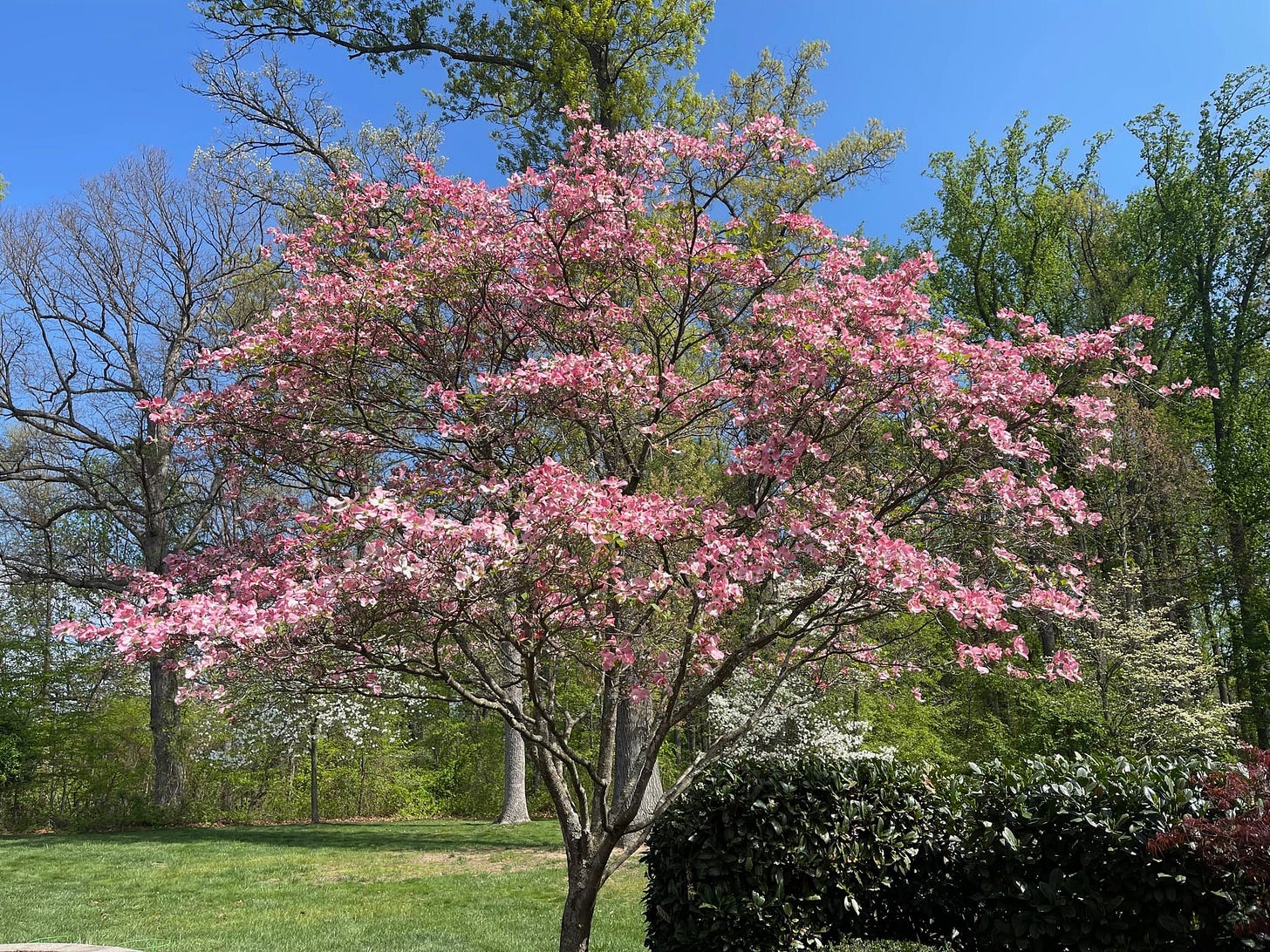
Note to readers: If you are looking for an easy way to find the archives for the blog, try clicking on the small images of me at the top of the blog post. The small round or square images should take you directly to the archive. Happy reading.

